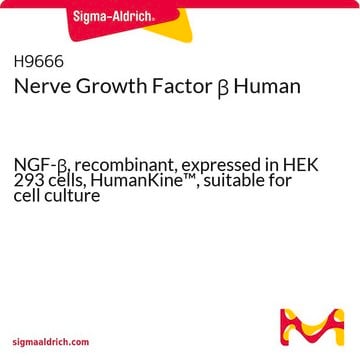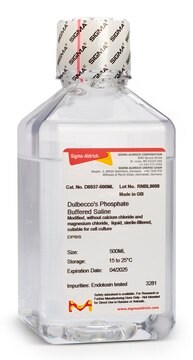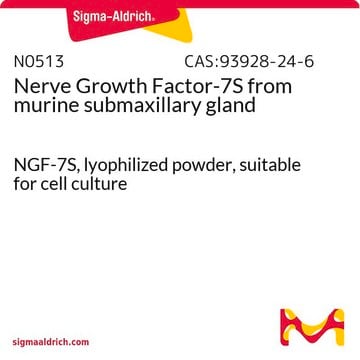N8133
Nerve Growth Factor from Vipera lebetina venom
lyophilized powder, suitable for cell culture
Sinónimos:
NGF
About This Item
Productos recomendados
Nombre del producto
Nerve Growth Factor from Vipera lebetina venom, NGF, lyophilized powder, suitable for cell culture
origen biológico
Vipera Lebetina
Nivel de calidad
Formulario
lyophilized powder
potencia
0.2-20 μg/mL ED50/EC50
calidad
endotoxin tested
mol peso
protein 32.5 kDa
envase
pkg of 0.1 mg
técnicas
cell culture | mammalian: suitable
impurezas
<10 EU/vial
color
white to off-white
Nº de acceso UniProt
temp. de almacenamiento
−20°C
Forma física
Nota de preparación
Nota de análisis
Código de clase de almacenamiento
11 - Combustible Solids
Clase de riesgo para el agua (WGK)
WGK 3
Punto de inflamabilidad (°F)
Not applicable
Punto de inflamabilidad (°C)
Not applicable
Equipo de protección personal
Eyeshields, Gloves, type N95 (US)
Elija entre una de las versiones más recientes:
Certificados de análisis (COA)
¿No ve la versión correcta?
Si necesita una versión concreta, puede buscar un certificado específico por el número de lote.
¿Ya tiene este producto?
Encuentre la documentación para los productos que ha comprado recientemente en la Biblioteca de documentos.
Los clientes también vieron
Nuestro equipo de científicos tiene experiencia en todas las áreas de investigación: Ciencias de la vida, Ciencia de los materiales, Síntesis química, Cromatografía, Analítica y muchas otras.
Póngase en contacto con el Servicio técnico









